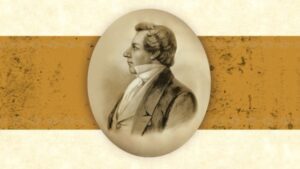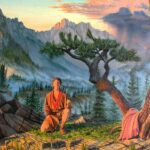![]()

By Michael R. Ash
Editor’s Note: The following article is courtesy of FAIR, a non-profit organization dedicated to providing well-documented answers to criticisms of LDS doctrine, belief and practice. FAIR can be found online at https://www.fairlds.org/.. In addition to horses, elephants, wheat and silk, some critics have claimed that Book of Mormon weaponry, warfare, and chariots are anachronistic as well. Warfare Some critics have claimed that according to archaeologists, “warfare was almost unknown in the Americas” during Book of Mormon times.1 We now know that the Book of Mormon was right all along. As one writer for National Geographic has explained, current scholarship recognizes the continuing warfare among early Amerindians. “Gone forever is the image of the Maya as peaceful, rather primitive… What emerges is a portrait of a vivid, warlike race, numerous beyond any previous estimate, employing sophisticated agricultural techniques. And like the Vikings half a world away, they traded and raided with zest…The Maya – so long portrayed as a peaceful, devout people – were involved in warfare from very early times.”2 Tents While Book of Mormon “tents” are not necessarily associated with warfare, I’ve included them in this section because they are associated with warfare in at least a few Book of Mormon passages (see Alma 46:31 and 47:9 and others). Critics have charged that there is no archaeological evidence for tents from ancient Mesoamerica. As noted previously, the lack of evidence is not evidence. Hebrew scholar John Tvedtnes notes: “I know of only one instance (Timna) where remnants of an ancient tent have been found in the territory of ancient Israel, despite the frequent mention of tents in the Bible.”3 Historical documents record plenty of instances in which the Aztecs (post-Book of Mormon peoples) made use of tents – constructed of woven grass mats – yet no archaeological evidence has survived.4 “If the Aztecs,” asks Dr. Sorenson, “who were great cultural copycats, were smart enough to figure out field shelter for their soldiers, were other Mesoamericans so benighted that they had never solved the same problem over millennia of warfare?”5 Armor When modern readers hear the word “armor” they usually envision the late medieval European armor. Armor, however, has been constructed of many materials. Following is a list of Book of Mormon armor with possible ancient New World equivalents. Weapons Book of Mormon weapons also had authentic New World counterparts: A scimitar (Book of Mormon “cimeter”) usually refers to a blade that is curved. The Book of Mormon tells us that warriors often fought with both swords and cimeters. It is therefore interesting to note that one recently discovered Mesoamerican sculpture depicts a warrior with a macuahuitl (sword) in one hand and a curved weapon (cimeter) in his other hand. There is enough Mesoamerican artwork and artifacts that display the basic characteristics of a scimitar that the Book of Mormon is vindicated for its usage.14 Some believers and critics have assumed that Book of Mormon swords must have been made of metal (see Ether 7:9, Mosiah 8:11). Part of this belief is derived from Nephi’s statement that he patterned news swords “after the manner” of the sword of Laban (see 2 Nephi 5:14). The “steel” swords of Ether may have had blades of what is currently known as “bronze” (see Part 4 of this series on “Anachronisms”). “Steel” swords are not mentioned after Ether, so they may have been unique. Other native swords might have had bits of metal rather than obsidian in their shafts, but obsidian would probably have been the preferred cutting tool (more abundant and easier to make into a weapon). As for Nephi patterning his sword after Laban’s metal sword, it is entirely possible that Nephi followed the general pattern – a double-edged, handheld, long blade (easily the macuahuitl). Wheel The supposition that Book of Mormon peoples knew of the wheel is based on the mention of chariots (Alma 18:9-12; 3 Nephi 3:22). The wheel is not mentioned in the Book of Mormon other than figuratively in the Isaiah passages (see 2 Nephi 15:28). Two different questions are at issue: Could the ancient Americans have known about the wheel but lost the knowledge? More than fifty clay “toys” or miniatures with axels and wheels have been uncovered in ancient America.15 Such miniatures (which most likely were not “toys” but had religious significance16) most certainly exhibit knowledge of the wheel and its uses. Full-sized wooden wheels most likely would have deteriorated through time. Of the tens of thousands of chariots mentioned in the Bible, not a single chariot fragment has ever been unearthed in the Holy Land.17 Some American cultures – after the wheel was introduced by the Spanish – refused to use the wheel because of its religious symbolism associated with the Sun.18 For hundreds of years others did not take advantage of the Spanish-introduced wheel because it was not practical in the Mesoamerican jungle terrain.19 Must a chariot have wheels? In Maya battle imagery, for instance, the king rides into battle on a litter or cloth covered framework between two parallel bars.20 Since the Book of Mormon never hints at riding or mounting a chariot (and since it is never mentioned in a military context), we cannot confidently conclude what such a “chariot” was. Some biblical passages referring to “chariots” can also be translated as a “portable couch” or “human-borne ‘sedan’ chair.” The Talmud even uses the term (translated “chariot” in English) for a nuptial bed.21 For more details on this topic see https://www.mormonfortress.com/ or https://www.fairlds.org/. Written by Michael R. Ash for the Foundation for Apologetic Information and Research (FAIR), Copyright 2003. https://www.fairlds.org/. 1 Latayne Colvett Scott, The Mormon Mirage (Grand Rapids, Michigan: Zondervan Publishing House, 1979), 83. 2 Howard La Fay, “The Maya, Children of Time,” National Geographic, (December 1975), 732-733. 3 John A. Tvedtnes, Review of Books on the Book of Mormon v6:1 (Provo, Utah: FARMS, 1994), 30. 4 John L. Sorenson, “Viva Zapato! Hurray for the Shoe!” Reviews of Books on the Book of Mormon 6:1 (Provo, Utah: FARMS, 1994), 331-335. 5 Ibid., 334. 6 William J. Hamblin, “Armor in the Book of Mormon,” Warfare in the Book of Mormon (Salt Lake City: Deseret Book Company and FARMS, 1990), edited by Stephen Ricks and William Hamblin, 412-413. 7 Ibid., 414. 8 John L. Sorenson, An Ancient American Setting for the Book of Mormon (Salt Lake City: Deseret Book Company and FARMS, 1985), 262. 9 Hamblin, 412. 10 Paul Tolstoy, “Utilitarian Artifacts of Central Mexico,” Archaeology of Northern Mesoamerica, Pt. 1, 282-283, quoted in William J. Hamblin, “The Bow and Arrow in the Book of Mormon,” Warfare in the Book of Mormon (Salt Lake City: Deseret Book Company and FARMS, 1990), 379. 11 Ibid., 380. 12 Eric Mishara, “Ancient Scalpels,” Omni, (December 1983), 55. 13 Sorenson, 262. 14 William J. Hamblin, “Handheld Weapons in the Book of Mormon,” HAM-85 (Provo, Utah: FARMS, 1985), 33. 15 John L. Sorenson, “Wheeled Figurines in the Ancient World” (Provo, Utah: FARMS, 1983), 4. 16 Ibid., 3. 17 John L. Sorenson, Images of Ancient America: Visualizing Book ofMormon Life (Provo, Utah: FARMS, 1998), 59. 18 Diane E. Wirth, A Challenge to the Critics (Bountiful, Utah; Horizon Publishers, 1986), 62. 19 Brant Gardner, https://pub26.ezboard.com/fpacumenispagesfrm58.showMessage?topicID=252.topic&index=74 20 Brant Gardner, “Wild horse hypothesis” posted on SAMU-L, November 25, 1996; copy in my possession. 21 Sorenson, Images of Ancient America, 59.
2006 Meridian Magazine. All Rights Reserved.

















